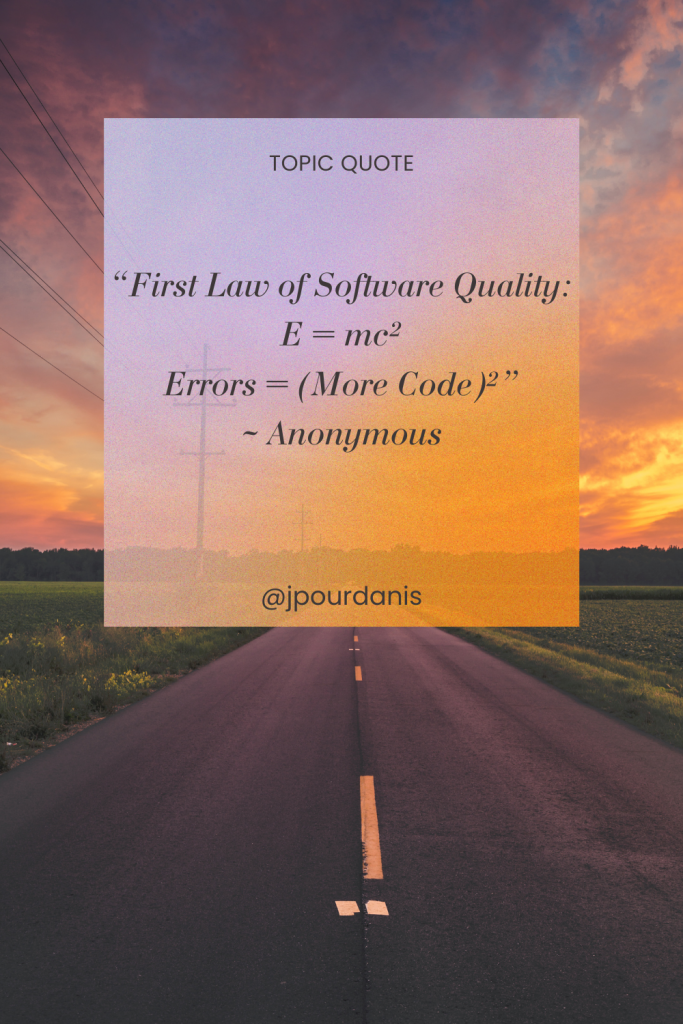In the universe of software development, there’s an undeniable truth that resonates with Einstein’s legendary equation:
E = mc²
Except in our world, it translates a bit differently:
Errors = (More Code)²
This playful twist on physics highlights a fundamental principle in software engineering—complexity is the enemy of quality.
The Hidden Cost of More Code
Every line of code you write is a potential liability. It’s another opportunity for bugs to creep in, for misunderstandings to blossom, and for maintenance costs to skyrocket. More code doesn’t just mean more functionality—it also often means more surface area for errors, and those errors don’t scale linearly. As our equation suggests, they scale exponentially.
Embracing Simplicity
The best software isn’t the one with the most bells and whistles—it’s the one that does exactly what it needs to, and no more. As testers, we are the last line of defense before software hits the real world. It’s our job not only to find bugs but to champion simplicity.
When code is simple:
- It’s easier to test.
- It’s easier to understand.
- It’s easier to maintain.
- It’s easier to trust.
How Testers Can Influence Code Quality
As testers, we’re often perceived as the people who break things. But our role is much more than that—we are quality advocates. And that means asking hard questions:
- Do we really need this feature?
- Is this the simplest way to implement it?
- Can we reduce this logic to something more testable?
By challenging assumptions and encouraging refactoring, we help developers avoid the code bloat that leads to exponential error growth.
Practical Application
This law encourages practices like:
- Modularization: Breaking down large systems into smaller, independent modules that are easier to manage and test.
- Code Review: Having other developers review the code to catch potential errors and ensure code quality.
- Testing: Thoroughly testing the code to identify and fix bugs before deployment.
The Takeaway
Einstein revolutionized physics with one elegant equation. Let’s take a page from his book and remember that elegance in code leads to excellence in quality. Fewer lines of code can mean fewer bugs, fewer headaches, and ultimately, a better experience for users.
So next time you’re tempted to add that “one more tweak,” remember the first law of software quality:
Errors = (More Code)²
Keep it simple. Keep it clean. Keep it quality.

